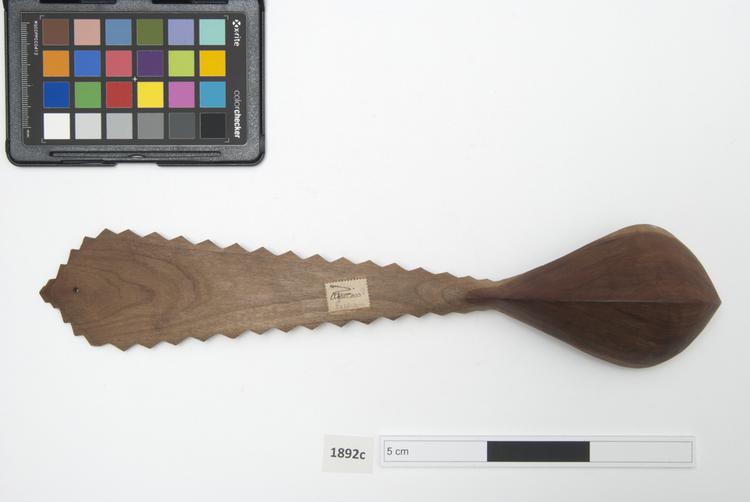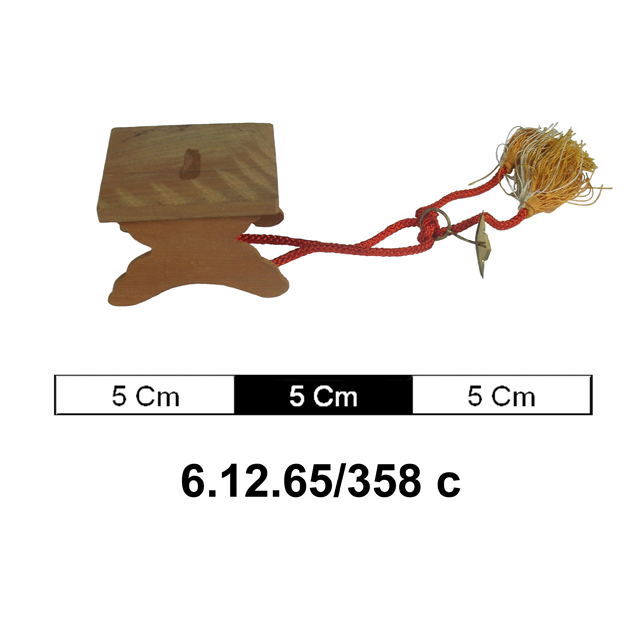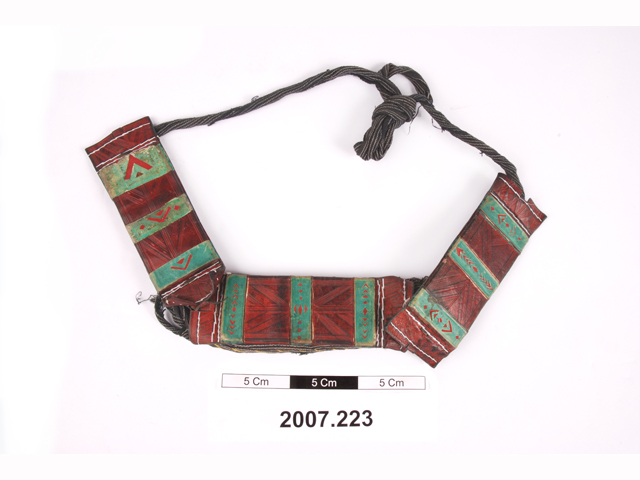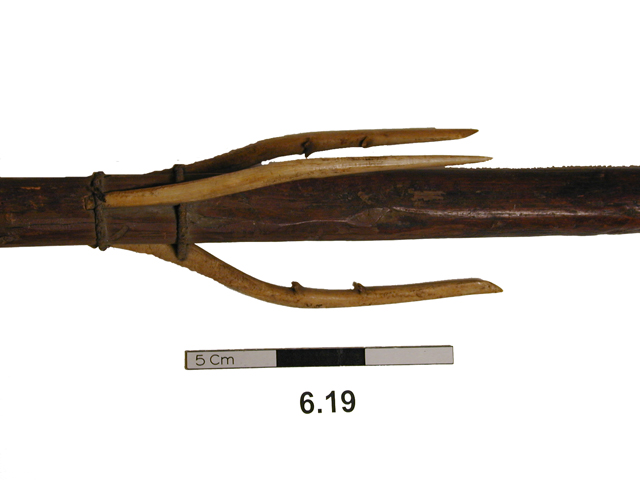
Wooden sherbet spoon (‘qashuq’) with a deep teardrop-shaped bowl with a pointed tip. The handle is flat, narrow at the stem and widens towards the tip, which is pointed. The edges of the handle have triangular serrations. The upper side of the handle is decorated with four rows of incised dots that follow the outline of the handle. There is a smooth, undecorated panel in the centre. Near the tip of the handle is a small pierced hole.
This carefully carved spoon was used for drinking sherbet. Typically sherbet would be presented in a ceramic basin with the bowl of the spoon floating on the liquid’s surface and the handle resting on the basin’s edge. A guest would drink from the spoon, then place it back in the basin for other guests to use. Spoons like this example are associated with the Iranian town of Abadah, although there is nothing to specifically link it to the town. In the nineteenth century Abadah was famous for its elaborately carved sherbet spoons (‘qashuq’) and many were collected by European travelers as they made easily transportable craft objects. Abadah spoons were carved form pear or box wood, but we do not know what wood was used in this example.


































































































































































































































































































































































































































































































































